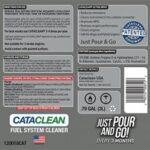Experiencing a P0430 code on your Nissan Maxima after a recent tune-up can be frustrating, especially when you’ve invested in new parts. Many Nissan Maxima owners encounter this issue, which points to “Catalyst System Efficiency Below Threshold (Bank 2)”. Let’s explore what this code means and how to troubleshoot it effectively.
The P0430 code essentially indicates that your catalytic converter on Bank 2 (typically the bank further from the engine’s accessory drive) is not performing as efficiently as expected. Your Nissan Maxima’s engine control unit (ECU) monitors the catalytic converters using oxygen sensors placed before and after the converter. When the downstream sensor detects oxygen levels that are too similar to the upstream sensor, it suggests the catalytic converter isn’t properly reducing pollutants, triggering the P0430 code.
Several factors can contribute to a P0430 error code on a Nissan Maxima, even after replacing components like spark plugs, coil packs, and oxygen sensors:
- Exhaust Leaks: A leak in the exhaust system, particularly before the catalytic converter or around the oxygen sensors, can introduce extra oxygen into the system. This can skew sensor readings and lead to a P0430 code. Carefully inspect exhaust manifold gaskets, piping, and welds for any signs of leaks.
- Faulty Oxygen Sensors: While you’ve replaced your oxygen sensors, it’s crucial to ensure they are the correct type and functioning correctly. Incorrect or defective new sensors can still cause problems. Double-check the sensor specifications and consider testing their performance with a multimeter or scan tool.
- Catalytic Converter Issues: Even if your catalytic converter is relatively new, it could still be the culprit. Internal damage, contamination, or premature failure can reduce its efficiency. Inspect the catalytic converter for physical damage and consider a back pressure test to assess for blockage.
- Engine Performance Problems: Issues like vacuum leaks, incorrect air-fuel ratios, or engine misfires (even minor ones not triggering separate codes) can overload the catalytic converter and reduce its efficiency over time, eventually leading to a P0430 code. Review your initial tune-up work and ensure all connections are secure and engine parameters are within specification.
- Wiring and Electrical Problems: Less commonly, wiring issues to the oxygen sensors or the catalytic converter heater (if applicable) can cause false readings or malfunctions leading to a P0430 code. Check the wiring harness for damage, corrosion, or loose connections.
Troubleshooting Steps for P0430 on a Nissan Maxima:
- Visual Inspection: Start by visually inspecting the entire exhaust system for leaks, paying close attention to joints, welds, and sensor bungs. Listen for hissing sounds when the engine is running, which can indicate a leak.
- Oxygen Sensor Diagnosis: Use an OBD-II scan tool to monitor the live data from your upstream and downstream oxygen sensors on Bank 2. Compare their readings and look for unusual patterns or slow response times.
- Catalytic Converter Examination: If other potential causes are ruled out, a more thorough inspection of the catalytic converter is needed. This may involve removing it to visually check for damage or blockage of the honeycomb structure. A professional shop can perform a catalytic converter efficiency test.
- Check for Engine Issues: Ensure there are no underlying engine performance problems. Check for vacuum leaks, review fuel trim data with a scan tool, and confirm proper spark plug and coil pack operation.
While spark plug extenders might temporarily eliminate the P0430 code by moving the downstream oxygen sensor further out of the exhaust stream, they are not a proper fix. They mask the underlying problem and can potentially lead to inaccurate fuel trim readings and long-term engine or emissions system issues. Addressing the root cause of the P0430 code is crucial for your Nissan Maxima’s performance, fuel efficiency, and emissions compliance.
By systematically checking these areas, you can effectively diagnose and resolve the P0430 code on your Nissan Maxima and ensure your emissions system is functioning correctly.
